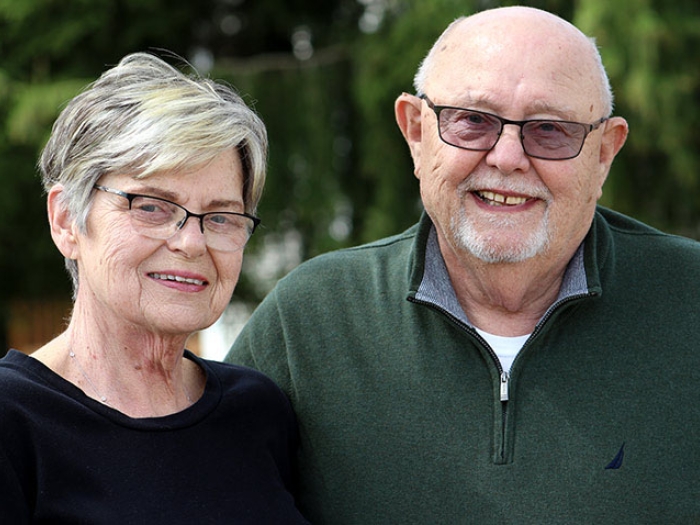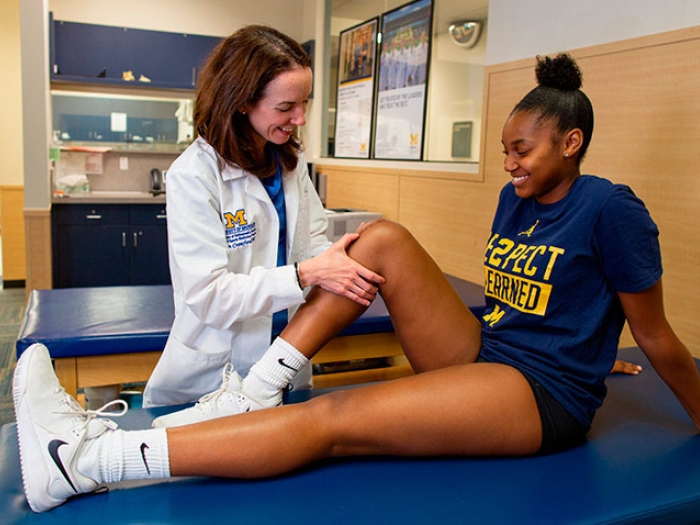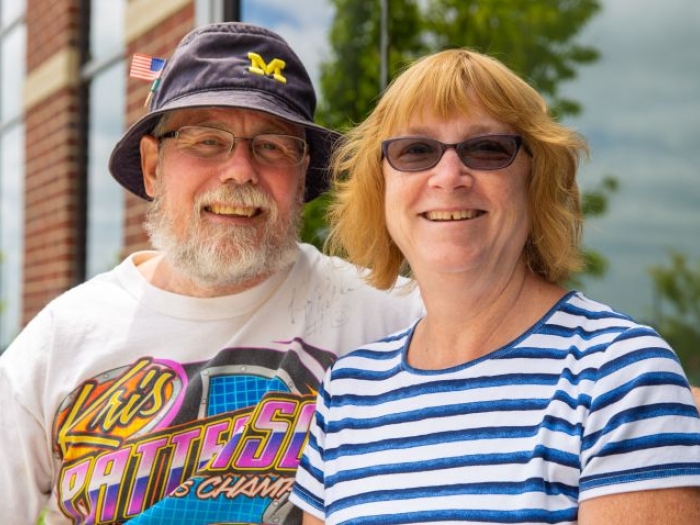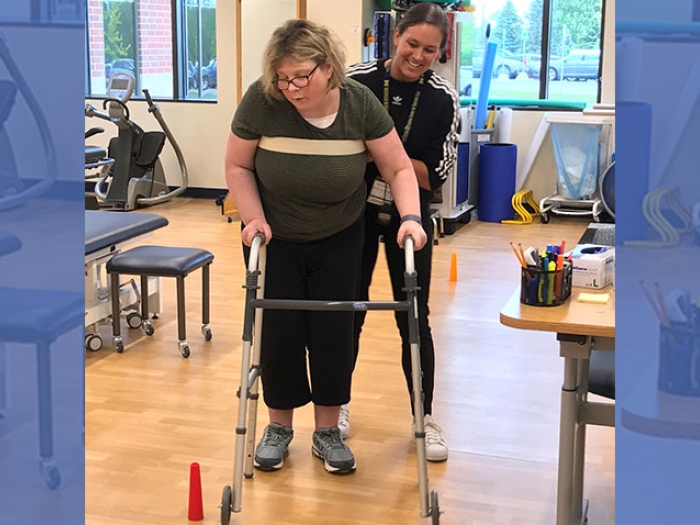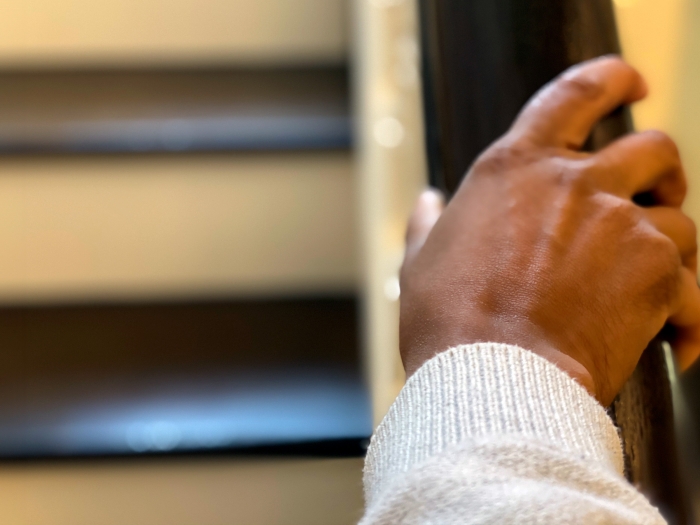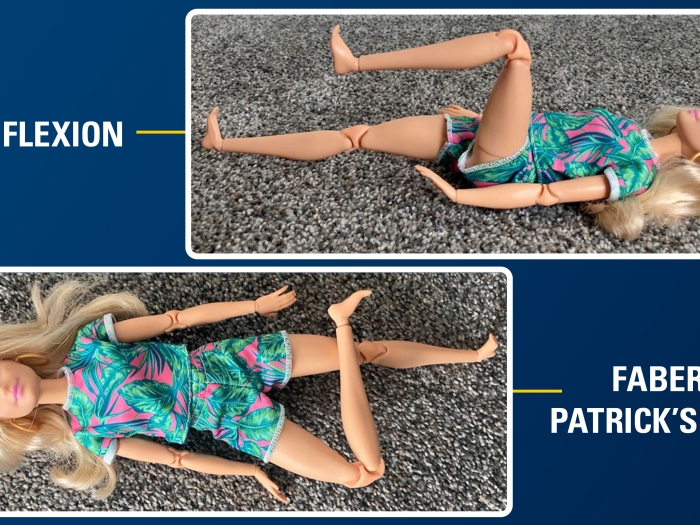Bonded by their love for each other, a couple are training their bodies to remain independent for as long as possible.
4:00 PM
Author |

For 19 years, Chris and Christine Pyrkosz have shared a marriage filled with love and laughter.
The Livonia, Michigan, couple also share the same medical condition: cerebral palsy.
MORE FROM MICHIGAN: Sign up for our weekly newsletter
That's what first brought the two together. While working at a cerebral palsy organization, Chris asked a friend about another colleague there: "What can you tell me about Christine?"
Cerebral palsy is a neurological disorder, generally present at birth but not diagnosed until a child is around one or two years old. The disorder affects muscle movement and coordination, tone and motor skills.
The couple find they often have to clear up misconceptions about their health.
"I wish people knew that it is a physical disability for me, not a mental disability," says Chris, 47. "People think just because your motor skills move a bit slower, that it's also your brain."
Christine agrees: "It frustrates me that people assume I'm also mentally handicapped."
The spouses don't let their condition hinder them from living a life they love. In fact, they live with total independence in their own home.
Both have attended regular physical therapy over the years at Michigan Medicine's Briarwood MedRehab clinic to strengthen their aging bodies.
"Until we decided to come to U-M, I always thought of therapy for people with cerebral palsy as being geared more towards children with cerebral palsy," says Christine, 51, "but we're realizing that therapy is just as important for adults with cerebral palsy."
Therapy for cerebral palsy pays off
After visiting a family doctor, the couple were interested in physical therapy specifically for their cerebral palsy. Their physician sent a referral to Heidi Haapala, M.D., assistant professor of physical medicine and rehabilitation at Michigan Medicine.
SEE ALSO: Exercise Guidelines for Cerebral Palsy Patients
"They had gone to physical therapy or private practices that specialize in orthopaedics, but they didn't know that here at the Department of Physical Medicine and Rehabilitation's MedRehab location, we have therapy available specifically for neurological disorders," says physical therapist Dayna Ryan, P.T., D.P.T., who has worked with the couple since their first visits.
"Dr. Haapala and I have great communication back and forth to ensure we are working together to address both of their needs."
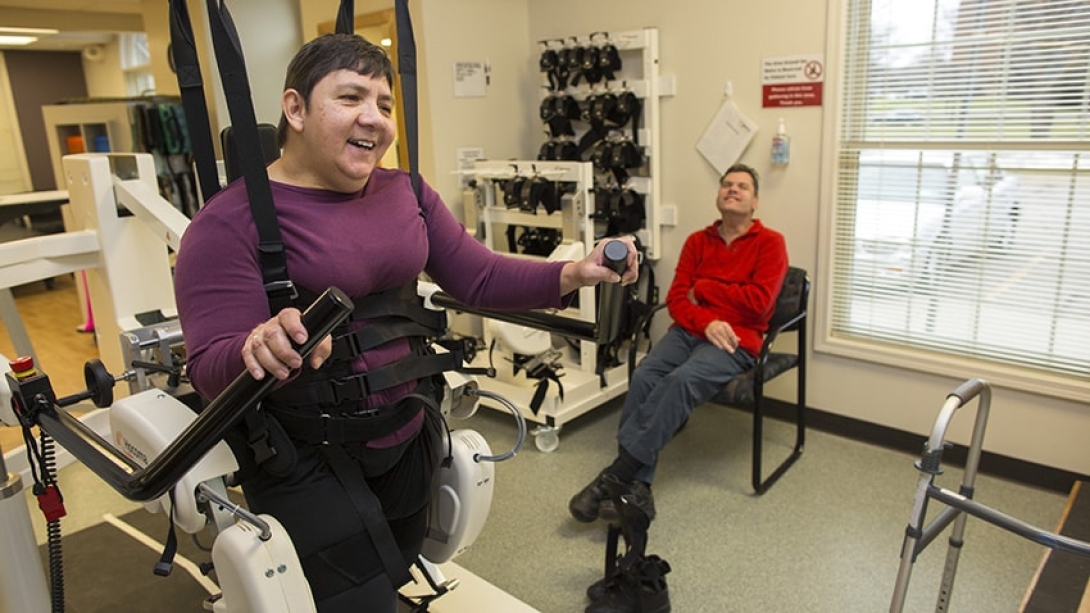
Chris and Christine enjoy their physical therapy sessions with Dayna.
And they value the environment: "At other physical therapy places we had been, everyone looked normal compared to me," Chris explains. "Here, it's the norm to not move normally."
Dayna adds, "They learned at MedRehab that their orthopaedic pains are a result of their joints weakening faster over time due to their abnormal muscle tone and spasticity. There's a true cause for the medical problems they are experiencing, not just pain."
Chris likes using the treadmill and stationary bike, which help with his leg spasticity, a condition in which muscles contract without his control. Recently, he worked with Michelle Shenton, a Michigan Medicine speech-language pathologist at MedRehab, by using a speech device to help him communicate.
Christine's favorite is the Hocoma Lokomat, a device that allows her to walk with robotic leg support over a treadmill while testing her endurance through a virtual game playing on the screen in front of her.
"Christine uses a walker and ankle-foot orthoses, so this device really helps with her gait pattern. Plus, games make it more fun than just walking," Dayna says. "It makes her focus on what she is doing and helps her walk faster and longer with better quality than what she could normally do on her own."
Continuing independence
The therapeutic efforts are meant to help Chris and Christine achieve one goal: to remain in their home for as long as possible.
"We've owned our own home for 17 years, and we would really like to stay there," Chris says. "Thanks to Dayna and U-M, we are getting the support and care we need."
At MedRehab, the affection — and intention — is mutual.
"Everyone here knows Chris and Christine," Dayna says. "One of our occupational therapists was able to come to their home and do a formal home assessment to make sure their home works for them — for example, adding in a shower chair and accessibility for Christine to get upstairs."
Christine adds, "We're starting to realize that we may need some assistance as we grow older."
That's why they've applied through the state to be approved for homecare to help them with housework and chores a few hours per week.

Advocating for others with cerebral palsy
Both Chris and Christine enjoy volunteering to help their peers.
The couple are involved with the Michigan Victory Games, a sporting event for athletes with disabilities, and Programs to Educate All Cyclists, an organization that teaches people with disabilities how to ride bicycles and about bicycle safety.
SEE ALSO: Living with Cerebral Palsy: 'Part of My Life, Not My Whole Life'
"For many years we competed in the Michigan Victory Games," says Chris, who is an inductee in the Michigan Athletes with Disabilities Hall of Fame. "However, last year we volunteered for the first time. We've always said over the years that if we were unable to compete, we would volunteer — and we enjoy that just as much."
Christine adds, "Just being there among people with disabilities is kind of like coming to MedRehab. We see others like us and feel like we fit in and we're not out of place."
Their time spent with the Programs to Educate All Cyclists is also like a homecoming for Chris.
"During my competing days, I represented the United States in the Paralympics. I competed in the 1992 and 1996 Paralympics in cycling where I rode a three-wheel tricycle," he says.
As for Christine, she served on the Girl Scouts Governor's Honor Guard for five years while scouting, proving that giving back has been a part of their lives for years.
"We're very involved in our church and like helping others," she says.
Future goals
While they're enjoying the present, Chris and Christine know the future will hold challenges.
"Through our physical therapy with Dayna, Christine and I have realized that as we age, living with cerebral palsy is taking a toll on our bodies," Chris says. "Up until a year ago, we hadn't thought much about how life would be as we aged."
The two plan to keep up with physical therapy as needed. Each is generally seen by the other's side offering support during sessions.
Meanwhile, they remain happy in their home together.
"I know a handful of friends with cerebral palsy that have lived in condos and apartments for those with disabilities, and there's nothing wrong with that," Christine says. "We've just had our home for so long, and we're not ready to give that up."
Photos by Bryan McCullough

Explore a variety of healthcare news & stories by visiting the Health Lab home page for more articles.

Department of Communication at Michigan Medicine
Want top health & research news weekly? Sign up for Health Lab’s newsletters today!
